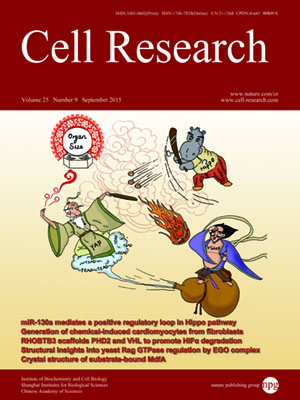
Volume 25, No 9, Sep 2015
ISSN: 1001-0602
EISSN: 1748-7838 2018
impact factor 17.848*
(Clarivate Analytics, 2019)
Volume 25 Issue 9, September 2015: 1074-1077
LETTERS TO THE EDITOR
Expansion of CRISPR/Cas9 genome targeting sites in zebrafish by Csy4-based RNA processing
Wei Qin1,2,*, Fang Liang1,*, Yan Feng1, Haipeng Bai1, Ruibin Yan2, Song Li1,2 and Shuo Lin1,3
1Laboratory of Chemical Genomics, School of Chemical Biology and Biotechnology, Peking University Shenzhen Graduate School, Shenzhen 518055, China
2Shenzhen Shengjie Biotech Co., Ltd., Shenzhen 518055, China
3Department of Molecular, Cell and Developmental Biology, University of California, Los Angeles, CA 90095, USA
Correspondence: Shuo Lin, Tel: +1 310-2674-970; Fax: +1 310-2674-971(shuolin@ucla.edu)
With its advantages of simple design and cost-efficiency, the CRISPR/Cas9 technology has been widely adapted for genome editing in different species including zebrafish1. In zebrafish studies, guide RNA (gRNA) is usually produced via in vitro transcription followed by microinjection with Cas9 mRNA into embryos. The vectors currently used for production of gRNA contain either a T7 or SP6 promoter in vitro or U6 promoter in vivo. Among these, T7 promoter is most popularly used due to its high efficiency and, therefore, limits the gRNA targeting sites to an optimal “GG-N18-NGG” format2.
10.1038/cr.2015.95
FULL TEXT | PDF
Browse 2523


